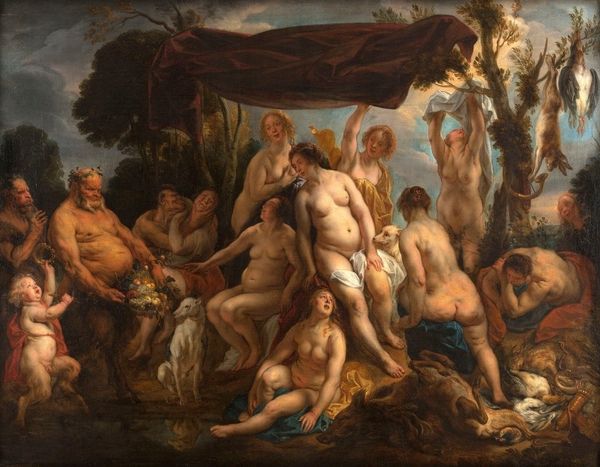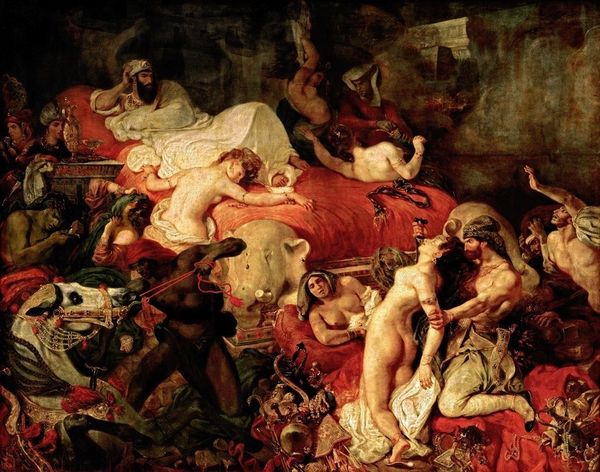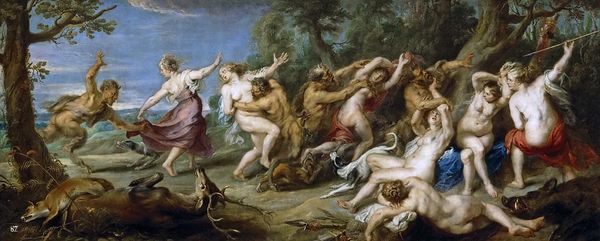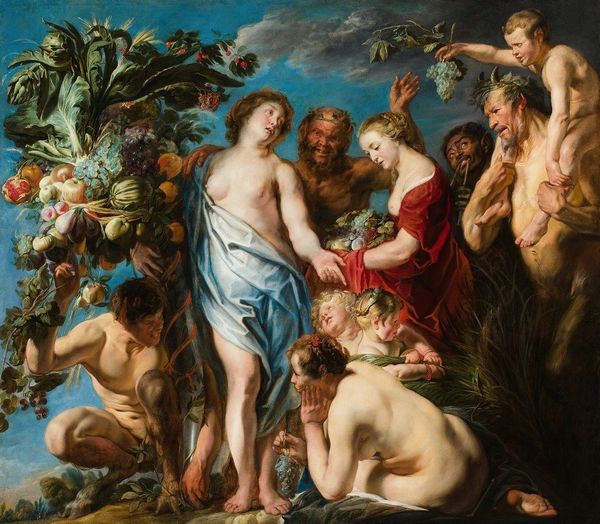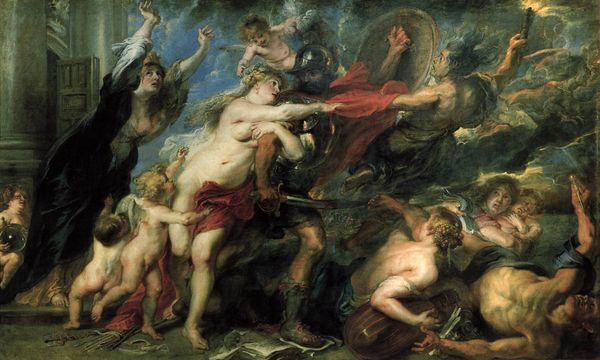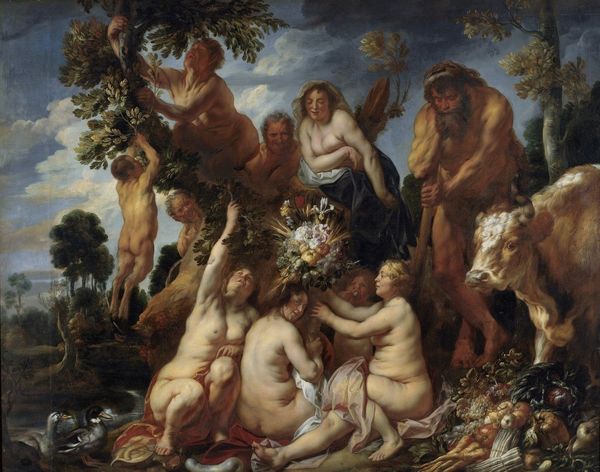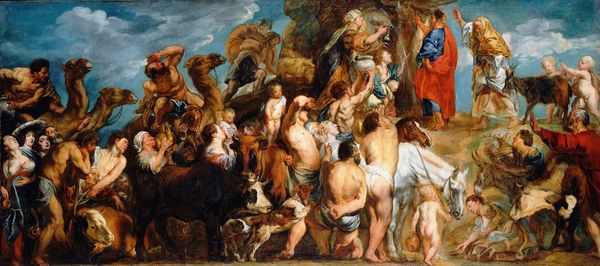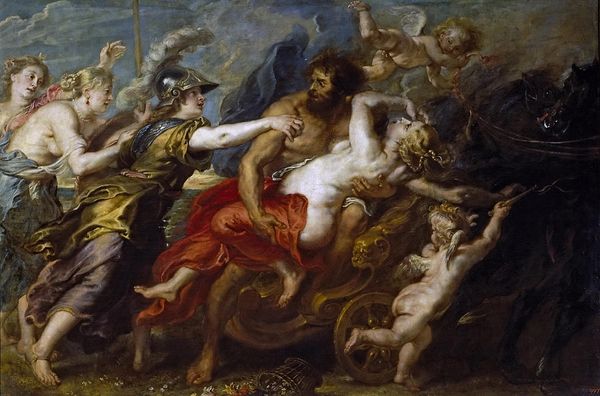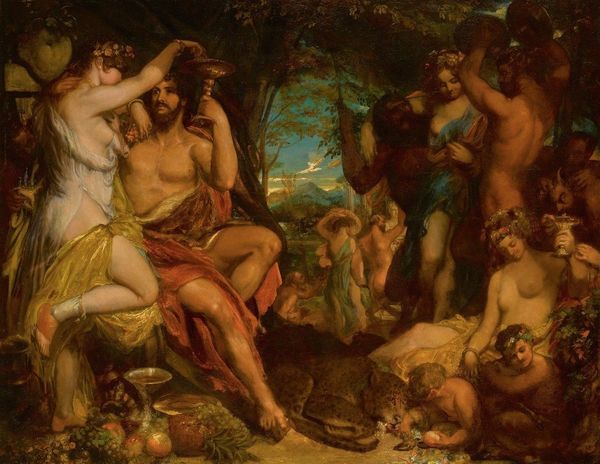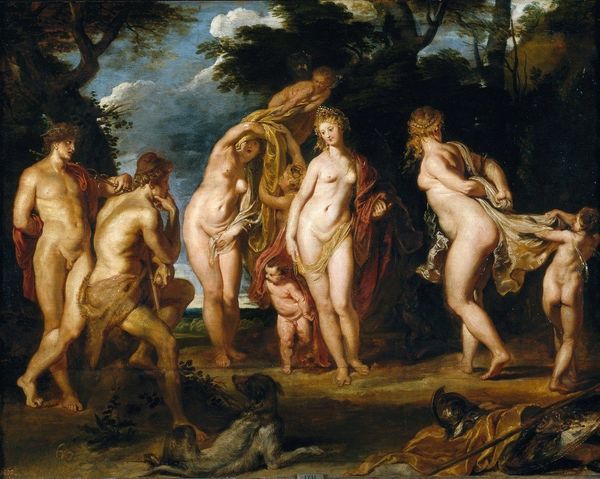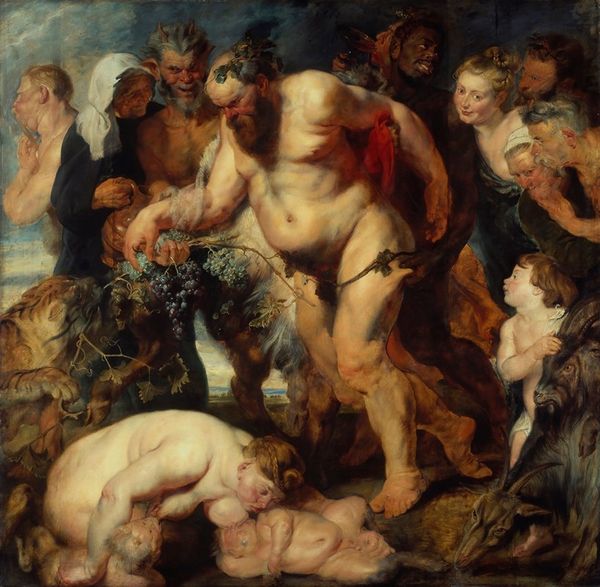
oil-paint
#
allegory
#
baroque
#
oil-paint
#
oil painting
#
roman-mythology
#
flemish
#
mythology
#
genre-painting
#
history-painting
#
nude
Copyright: Public domain
Jacob Jordaens’ painting, “The Rest of Diana,” currently in the Louvre, presents us with a scene awash in dynamic, almost chaotic energy. The robust figures are rendered with a tangible, fleshy quality through Jordaens’ expert handling of light and shadow. Notice how the composition is structured around a series of diagonal lines, creating movement that draws the eye across the canvas. This Baroque dynamism is not merely decorative. Jordaens uses the formal elements to explore the tension between classical ideals of beauty and the more earthly, sensual realities of human existence. The grouping of figures and still life create a semiotic dialogue of contrasting codes, from the elegance of Diana and her entourage to the crude offerings of satyrs and the blunt realities of hunted game. It destabilizes the traditional mythological scene, infusing it with a raw, human element. The formal tension embodies a broader cultural discourse. The use of contrasting diagonals becomes an active carrier of meaning. It not only creates a visually engaging composition but also embodies the inherent contradictions and complexities of the human condition, inviting ongoing interpretation.
Comments
No comments
Be the first to comment and join the conversation on the ultimate creative platform.
